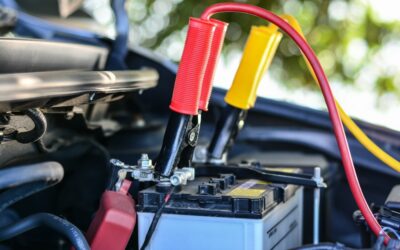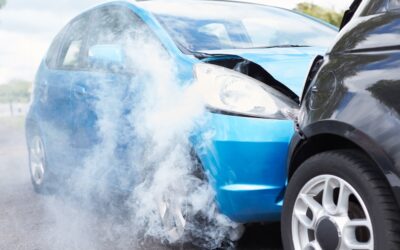If you’re involved in a car crash, your car insurance provider might tell you that your vehicle’s a “write-off”.
What is a Write-Off?
If your vehicle’s a write-off, it might mean that it’s so damaged that it’s no longer safe to drive. Or it might mean that the car’s still safe to drive, but that repairs are not economically viable.
If your insurers decide your car’s too unsafe to drive, they might offer you a cash payout in place of repairs. But when it comes to writing-off a car for economical reasons, the exact rules will differ from insurer to insurer.
All car insurance providers work with a different repair-to-value ratio. For the sake of argument, let’s say your insurer has a repair-to-value ratio of 50%, and your car is worth £10,000. In this case, they’d consider your car a write-off if the repair work needed exceeded £5,000 – more than 50% of the car’s value.
Why Do Insurers Write-Off Cars?
It’s because, wherever possible, they aim to return your car to you in the same condition it was in before the crash. This often means they have to get parts and repairs from specific suppliers, which can sometimes make even minor repairs prohibitively expensive.
For example, say you have a brand-new car, and you’re involved in a minor collision. It’s caused some cosmetic damage to your paintwork. No big deal. It shouldn’t cost too much to get repaired, should it?
Unfortunately, with some cars, even the cost of painting and repairing panels can exceed the car’s actual value. So it’s not uncommon for insurers to write-off a car that’s only sustained minor cosmetic damage.
This can be confusing and frustrating for drivers. So to make things a little easier to understand, insurers work with a number of different write-off categories – A, B, S & N. Each category refers to the extent of the damage while setting guidelines on whether it’s still safe to buy or sell the car.
Old Write-Off Categories – A, B, C, D
Up until 1 October 2017, insurers worked with four write-off categories: A, B, C and D. This was essentially a sliding scale of damage. Category A write-offs were severely damaged, while category D write-offs had perhaps only suffered cosmetic damage.
Insurers still work with categories A and B. But instead of categories C and D, they now use categories S and N.
We’ll explain what each of these categories means in more detail below. But first, it’s important to understand why insurers moved away from the old system in the first place. It’s because the old system focused entirely on how much it would cost to repair a car. The new system instead looks at structural issues that might affect road safety. It makes things a little clearer – especially when it comes to buying and selling written-off cars.
Category A
This is for true write-offs, for cars that have been involved in major collisions. A category A car is only good for scrap. It must never appear on the road again, so it’s going to be crushed. Category A cars are so badly damaged that you can’t even salvage them for parts. Everything is compromised, so everything must be scrapped.
Category B
This basically means that the car’s very badly damaged, but you can still salvage it for parts. The car’s outer shell’s will be scrapped. And while the car itself will never appear on the roads again, its reclaimed parts can be safely used in other vehicles.
Category S
Category C is now category S. The S stands for “structural”. It means that the vehicle’s suffered some major structural damage – perhaps to the chassis or the crumple zone – and it won’t be safe to drive until it’s repaired. A category S write-off therefore calls for costly professional work, but it doesn’t mean that the car can never be driven again.
Category N
Category D is now category N. It basically means that the car’s suffered no structural damage. This might just mean that the damage is simply cosmetic. But don’t be too sure. Insurance assessors consider problems with brakes, electrics, and steering to be “non-structural”. Fixing these electrical issues can be immensely costly, and the car’s a write-off when the repairs would cost more than the car’s worth.
Buying and Selling Write-Offs
It all depends on what category the insurance assessor places your car in. If it’s a category A or B, then unfortunately, the law states that your car has to be crushed. But if it’s a category S or N, then the car can be sold on – either to you, the original owner, or to a salvage company.
It might make better economic sense for you to sell your write-off than it does to get it repaired. But is it safe to buy a write-off?
So long as all of the necessary repairs take place, in theory, category S and N write-offs should be perfectly safe to drive. Just make sure you check the car’s history before you buy any second-hand car, though. Some sellers might try to pass off category S or N cars as completely undamaged. You can use the government’s MOT lookup tool to check on any car’s history.
But there are a couple of things to keep in mind if you’re considering buying a write-off:
- There are currently no controls on standards of repair. There are no legal obligations to check or independently verify any repairs a category S or N car receives.
- Category S and category N cars might cost a little more to insure. Insurance is all about risk, and there is unfortunately a risk, however small, that former write-offs might not be as safe as cars that haven’t been involved in an incident.
If you want total peace of mind that your car will be as safe and reliable as possible, it might be a good idea to avoid buying a former write-off. Any savings you make might be negated by higher insurance premiums anyway.




